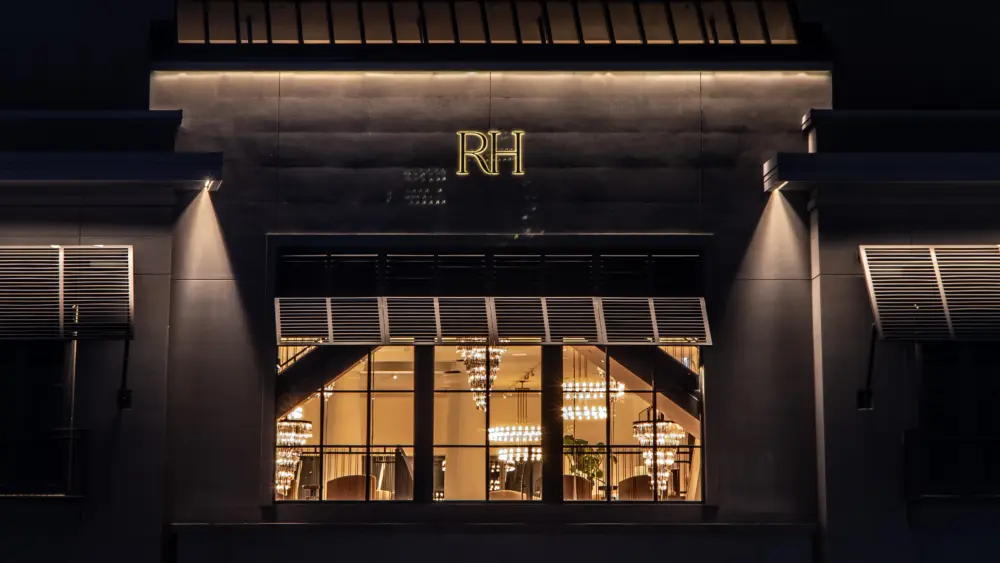Have you gotten your bailout yet? Trust me babe, among the rich and financially sophisticated, it’s all the rage. There’s simply no denying that money from the Troubled Asset Relief Program (TARP) is quite fashionable—you could call it this season’s most sought after financial accessory.
It used to be that “bailout” referred to your first marriage or, the action you took when a friend wound up in jail. But now it means the good folks in Washington write you a big check if you’re a bank.
But bailouts aren’t just for banks anymore. Let’s say you’re an insurance company and all day long, you collect premiums and insulate companies and just plain folks from the ill winds of fate. Sure, you may refuse to honor claims, but there’s usually a very good reason buried on page 423, paragraph C, subsection 2G, backing up that very prudent decision.
Now you, too, can have a bailout. Just like AIG, you can partake of the Treasury’s bucks buffet. There’s a catch in that you need to either be “too big to fail” or you need to buy a small bank (like Genworth Financial, Hartford Financial and Lincoln National all did). You don’t even need to call the good old US of A home—just ask Dutch insurer AEGON NV. But once you find a little bank to call your own, the sky’s the limit. I mean, AIG originally picked up an $85 billion bridge loan. Turns out it was a bridge to nowhere, because the insurer came back to Uncle Sammy and traded the loan in for a $60 billion loan at a lower interest rate, a $38 billion credit facility and a pony. OK, I’m kidding about the pony. Also the Feds bought $40 billion in AIG stock. And then AIG celebrated by giving a $440,000 week-long bash for some of its sales reps at the St. Regis Resort in Dana Point, the only five-star resort in our fair state.
Let’s say you’re a credit card company like American Express or a bank whose main business is plastic, like Capital One. To the outside observer, it might not seem like that pair of companies could glom onto dime one. But American Express pulled down a cool $3.9 billion, and Capital One can brag it now has $3.5 billion of your money in its wallet.
Let’s go further afield. Say you’re in the motorcar industry, and you’re having a difficult time convincing your countrymen to part with their dollars in exchange for a shiny new automobile. All you’d need to do is go to Washington, D.C., a couple of times and appear before some Congressmen and Senators and tap dance around some questions. One tip however: Leave the corporate jet at home. Do that, and you can pick up $5.5 billion, like Chrysler, or maybe as much as $15.4 billion like GMAC.
You don’t even need to be a business to try to get in on this action. Take the city of Atlanta. Like many cities across this great land of ours, “Hotlanta” is running in the red these days, so Mayor Shirley Franklin wants some bailout bread. Likewise, Philadelphia and Phoenix contacted the Feds looking for loot. If you know the way to San Jose, you could chat up Mayor Chuck Reed about his desire to lighten the TARP pot by $14 billion. And then you could ask him to share whatever medication he was on when he came up with that neat little figure.
You could even be a school district. Take the Olmstead Falls School District in Ohio. Seems Superintendent Todd Hoadley applied for $100 million in TARP cash. To be fair, Hoadley and Olmstead Falls still haven’t made it to the payout window. But that lack of love by the Treasury didn’t slow the Broward County School Board in Florida from voting to ask the Feds for their share of the Benjamins, a figure they peg at $500 million.
North Bay banks know the bailout is about opportunities. Summit State Bank is $8.5 million richer thanks to the TARP program. Bank of Marin counts itself $28 million to the good, and Exchange Bank received $43 million to help overcome some loan difficulties suffered when the Sacramento construction market fell apart like the Golden State Warriors in the fourth quarter. Circle Bank may end up with $5 million from the Feds, and other banks with local branches, like Mechanics Bank, Umpqua Bank, U.S. Bank, Wells Fargo, Northern Trust, SunTrust, Bank of America and Citibank, picked up a collective $117 billion. Bank of America and Citibank have even gone back for second helpings. [Note: These numbers are current as of mid-January.]
One of the real beauties of the TARP program in its early going has been that those who participate don’t actually have to lend any money. As it turns out, that was kind of a suggestion. Just imagine what your company might be able to accomplish with a fresh influx of millions—or even billions. As he took office, Obama pledged to Congress that lenders who received ducats out of the remaining $350 billion would have to lend some money.
Though the TARP funding is underwritten by taxpayers and is, thus, public, there have been no requirements for recipients to report to either the Feds or the public just what they’re doing with the cash. And before local bankers wear out their keyboards firing off letters to the editors on this point, let me clarify that Exchange Bank, Bank of Marin and Circle Bank have all shared plans with NorthBay biz that they intend to use the TARP gelt to loan to local folks. (See “Money in the Bank?”) That said, Associated Press did a nice story where it asked 21 different lenders, who picked up at least $1 billion each, four basic questions: How much has been spent? What was it spent on? How much is held in savings? What’s the plan for the rest? “None of the banks provided specific answers,” Matt Apuzzo’s story reads.
Let me present some samples in case you partake of the financial feast from the Feds and need to avoid one of us pesky reporter types. “We’re not providing dollar-in, dollar-out tracking,” a SunTrust Bank spokesman said. A spokesperson for BB&T (a North Carolina-based bank) said the $3.1 billion it received, “doesn’t have its own bucket,” which sounds quite honest to me—after all, it would probably need to be a really big bucket. On the other hand, BB&T could probably afford a suitable pail. Morgan Stanley went the safe route: “We’re going to decline to comment.” But my favorite comes from New York Mellon, which received $3 billion. “We’re choosing not to disclose that,” the spokesman said, before adding, “I’d just prefer if you wouldn’t say we’re not going to discuss those details.”
I bet. So there you have it, a primer on how your business can take lemons and make lemonade. The first step is bellying up to the trough.
Author
-

Bill Meagher is a contributing editor at NorthBay biz magazine. He is also a senior editor for The Deal, a Manhattan-based digital financial news outlet where he covers alternative investment, micro and smallcap equity finance, and the intersection of cannabis and institutional investment. He also does investigative reporting. He can be reached with news tips and legal threats at bmeagher@northbaybiz.com.
View all posts



